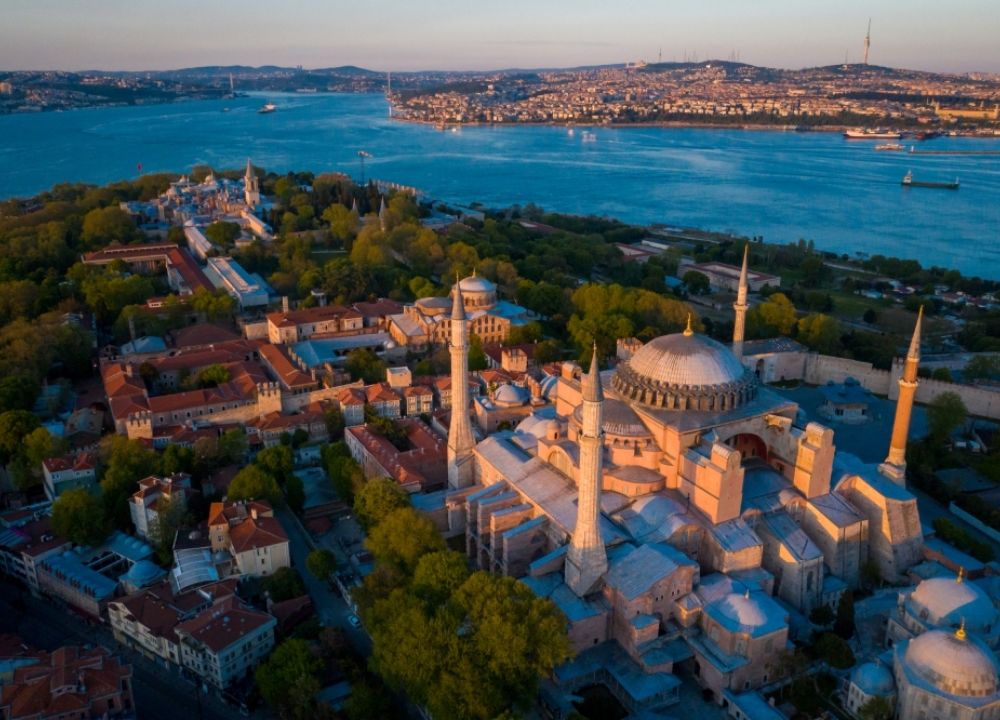Sultanahmet, the Heart of Istanbul

Istanbul is one of the most special cities in the world with its thousands of years of history, unique cultural texture and valuable historical monuments. Located in the heart of this city, Sultanahmet is situated on the historical peninsula of Istanbul and takes its name from the famous Blue Mosque in the area. Bearing the traces of the Byzantine and Ottoman empires, Sultanahmet offers a time-traveling atmosphere to its visitors.
Sultanahmet is one of the most historically, culturally and artistically rich areas of Istanbul. This historical peninsula, which offers its visitors unique artifacts from the Ottoman and Byzantine periods, forms an important part of the world heritage. An indispensable discovery point for both local and foreign tourists, Sultanahmet harbors a different story in every corner.
Sultanahmet's Historical Heritage
Sultanahmet, one of the oldest settlements in Istanbul, has been home to many civilizations throughout history. Once the center of the Byzantine Empire, it became the capital of the Ottoman Empire in 1453 and became the center of the city's social, cultural and political life. Sultanahmet is home to countless historical buildings from Hagia Sophia to Topkapi Palace, from the Basilica Cistern to the Blue Mosque.
Sultanahmet Mosque (Blue Mosque)
The Blue Mosque, which has become a symbol of the region, was built by the Ottoman Emperor Ahmed I in the 17th century. The mosque stands out with its six minarets and is popularly known as the "Blue Mosque". The blue, green and white colored Iznik tiles in its interior are the biggest factor in giving it this name. The Blue Mosque is both an active place of worship and a popular attraction for tourists.
Hagia Sophia
Hagia Sophia is one of the most important cultural and religious symbols of the Christian and Islamic world. Originally built in 537 as a Byzantine church, Hagia Sophia was converted into a mosque and later a museum. The dome of the building is considered a great architectural achievement and the mosaics inside Hagia Sophia are among the most valuable works in the history of art.
Topkapı Palace
Topkapı Palace, which hosted Ottoman Emperors for centuries, continues to impress its visitors with its magnificent architecture and fascinating stories. The palace is home to valuable collections reflecting the power and splendor of the Ottoman Empire. The harem section, holy relics, weapons and portraits of the sultans are among the must-see parts of the palace.
Basilica Cistern
The Basilica Cistern is an impressive structure that sheds light on the mysterious history of Istanbul. Built in the 6th century by the Byzantine Emperor Justinian, the cistern was used to meet the city's water needs. The cistern fascinates its visitors with its unique atmosphere and column capitals decorated with mythological figures such as the head of Medusa.
Archaeological Museum
One of the important works that contribute to the historical texture of Sultanahmet is the Istanbul Archaeological Museum. Considered one of the largest museums in the world, this museum contains artifacts from Anatolia, Mesopotamia, Egypt and Greco-Roman periods. Visitors witness important periods of human history during their visit to the museum.
Gülhane Park
Located right next to the Sultanahmet district, Gülhane Park is one of the oldest and largest parks in Istanbul. The park, which contains historical buildings from the Ottoman period and natural beauties, is an ideal stop for those who want to escape the busy pace of the city and find peace. With its colors changing according to the seasons, Gülhane Park offers visitors unique photo frames.
Grand Bazaar and Spice Bazaar
Located close to Sultanahmet, the Grand Bazaar and Spice Bazaar are historical places that offer a combination of shopping and cultural experience. Lined with thousands of shops, the Grand Bazaar is a paradise where you can find souvenirs, jewelry, handicrafts and many other products. The Spice Bazaar is full of spices, tea, sweets and traditional Turkish delicacies.


